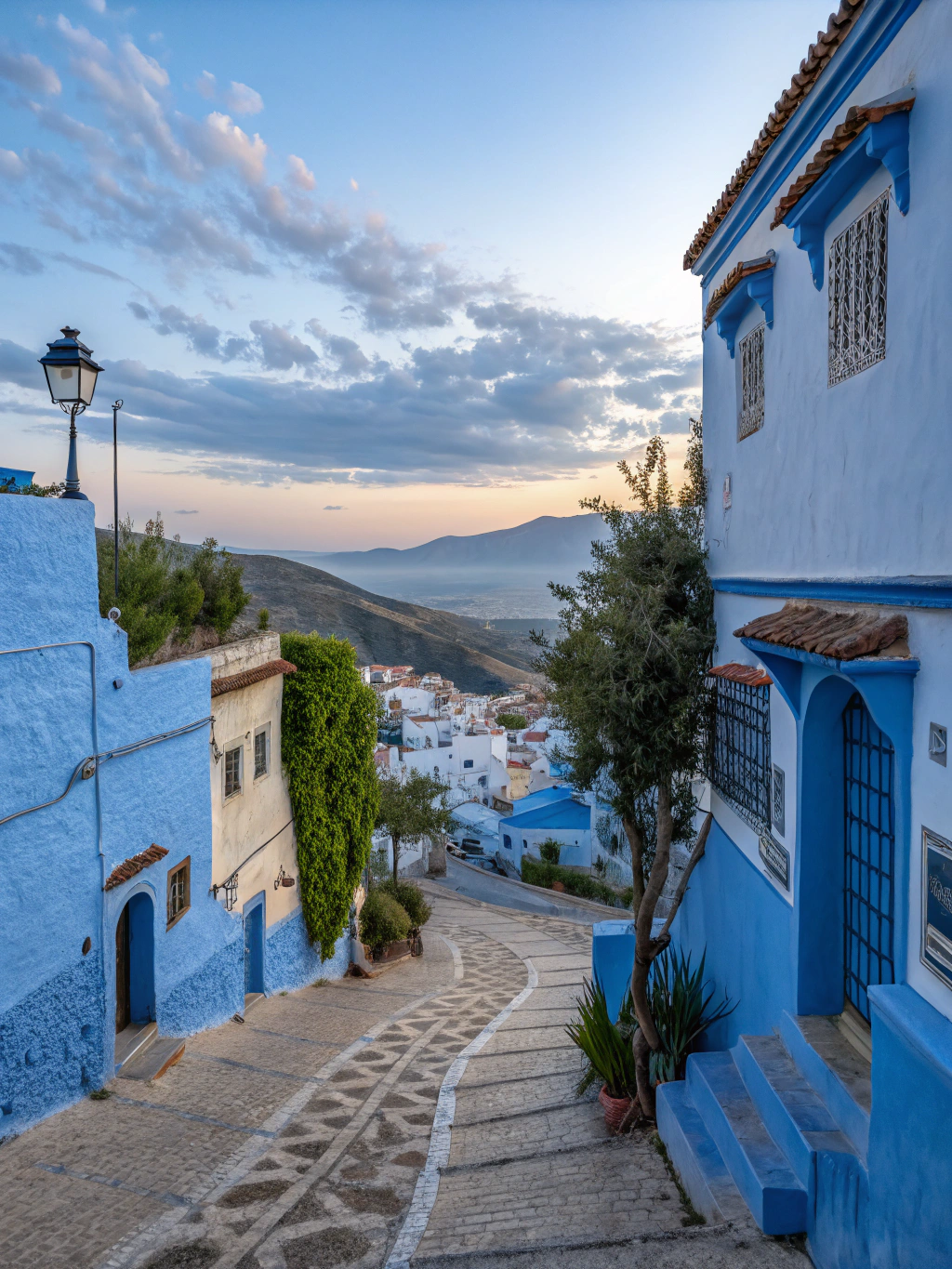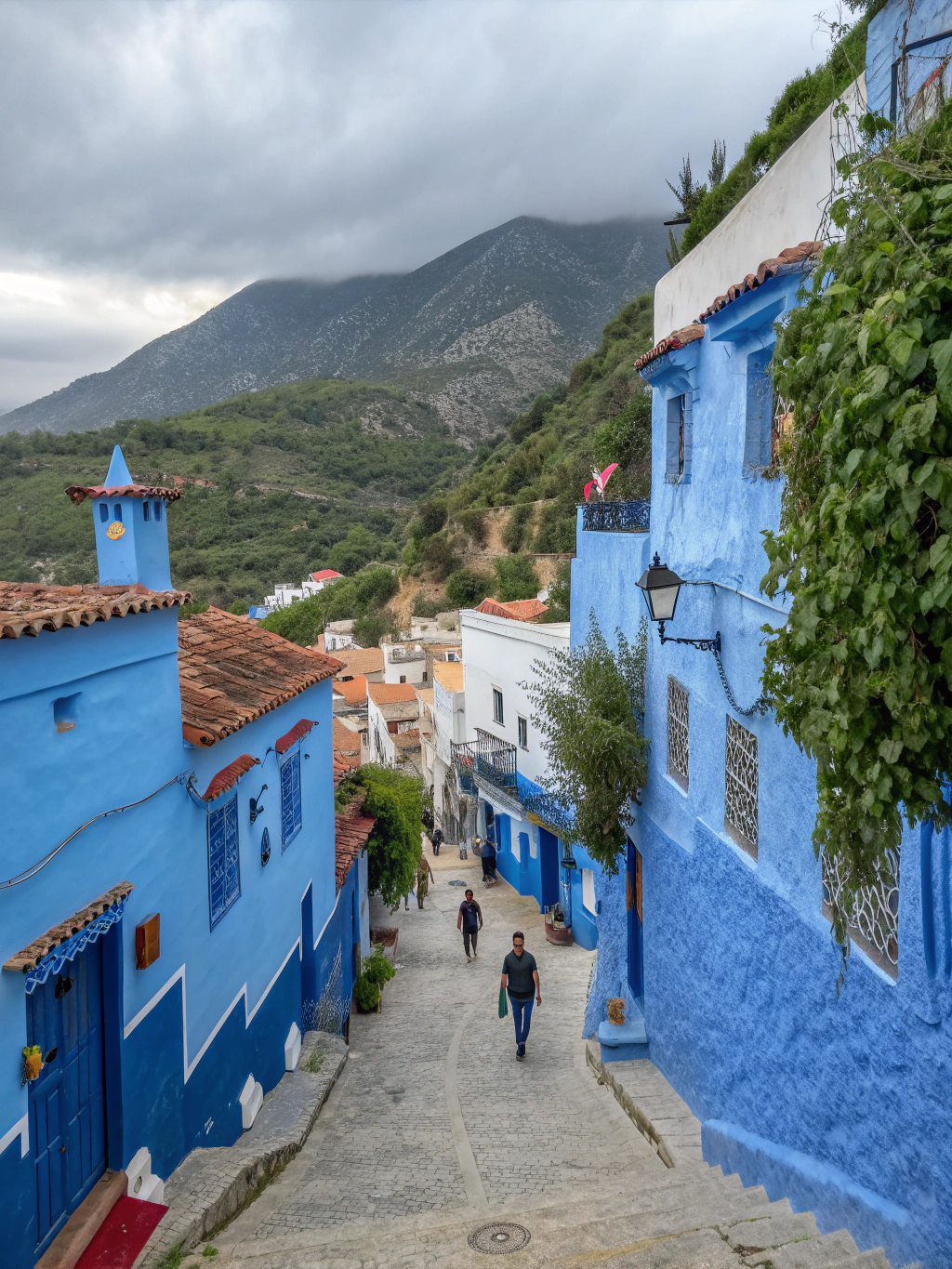Introduction
Is the enchanting blue city of Chefchaouen simply a picturesque Instagram backdrop, or is there a deeper cultural tapestry waiting to be unraveled in just one day? According to recent tourism data from Morocco’s Ministry of Tourism, over 800,000 visitors flock to this azure mountain gem annually, yet most spend fewer than 6 hours exploring its winding streets. This comprehensive guide will transform your Chefchaouen day trip into an unforgettable cultural immersion, whether you’re departing from the imperial city of Fez or the coastal hub of Tangier. With strategic planning and insider knowledge, you’ll discover hidden photo spots, authentic local experiences, and the secret rhythms of Morocco’s most photogenic destination.
- Introduction
- Essentials & Must-Dos
- Timing & Scheduling
- Morning Arrival (9:00-10:00 AM): Gateway to the Blue City
- Mid-Morning Exploration (10:00 AM-12:00 PM): The Heart of the Medina
- Midday Cultural Immersion (12:00-2:00 PM): Local Flavors and Artisan Encounters
- Afternoon Photography Safari (2:00-5:00 PM): Hidden Gems and Secret Spots
- Golden Hour Magic (5:00-7:00 PM): Sunset Views and Final Captures
- Health & Safety Advisories
- Alternative Routes & Experiences
- Suggested Activities & Pairings
- Common Mistakes to Avoid
- Logistics & Storing Tips
- Conclusion
- FAQs
Essentials & Must-Dos

Before embarking on your azure adventure, arm yourself with these travel essentials that will elevate your experience from tourist to cultural explorer. Pack a portable phone charger instead of relying on café outlets, as the medina’s narrow alleys can drain your battery while you navigate and capture memories. Bring comfortable walking shoes with good grip – the cobblestone streets become slippery after mountain mist, and you’ll be climbing steep inclines throughout the day.
Currency-wise, carry small denomination dirhams (10-50 DH notes) for local artisans and mint tea purchases, as many family-run shops don’t accept cards. A lightweight scarf serves dual purposes: respectful coverage when visiting mosques and protection from the Atlas Mountain breeze that sweeps through the city. Don’t forget a reusable water bottle – the mountain air is surprisingly dry, and staying hydrated while exploring the medina’s endless staircases is crucial for maintaining energy levels throughout your adventure.
Timing & Scheduling
The magic of Chefchaouen unfolds differently across seasons, with spring (March-May) and autumn (September-November) offering the most comfortable temperatures for extensive walking. Data from local tourism boards indicates that visiting during weekdays can reduce crowd density by up to 40% compared to weekends, particularly around the iconic Plaza Uta el-Hammam.
Your day trip requires a minimum 8-hour window to truly absorb the city’s essence, factoring in 3-4 hours of driving from Fez or 2 hours from Tangier. Optimal departure time is 8:00 AM, allowing you to arrive when the morning light creates the most stunning blue wall contrasts for photography. The golden hour before sunset (typically 6:30-7:30 PM) provides another magical photography window, but plan to begin your return journey by 8:00 PM to ensure safe mountain driving. During Ramadan, adjust your schedule as restaurants and cafés operate on modified hours, though the spiritual atmosphere adds a unique dimension to your cultural experience.
Morning Arrival (9:00-10:00 AM): Gateway to the Blue City
Begin your adventure at Bab el-Ain, the main entrance gate where the city’s blue transformation story begins. This strategic starting point allows you to witness the gradual intensification of azure hues as you climb deeper into the medina. The morning light here creates perfect conditions for establishing shots that showcase the dramatic transition from the natural mountain landscape to Chefchaouen’s distinctive architecture.
Mid-Morning Exploration (10:00 AM-12:00 PM): The Heart of the Medina
Navigate to Plaza Uta el-Hammam, the bustling central square where local life unfolds naturally. The red-walled kasbah contrasts beautifully against the surrounding blue buildings, offering dynamic photographic compositions. Spend time observing daily rhythms: elderly men playing chess, children heading to Quranic school, and women in colorful traditional dress conducting morning errands. This authentic cultural immersion provides context beyond the city’s Instagram-famous facades.
Midday Cultural Immersion (12:00-2:00 PM): Local Flavors and Artisan Encounters
Seek out family-run restaurants tucked into the medina’s quieter corners, where traditional tagines simmer slowly and fresh bread emerges from communal ovens. Engage with local artisans in their workshops – carpet weavers, leather craftsmen, and silver smiths who maintain centuries-old techniques. These interactions provide deeper cultural understanding while supporting the local economy directly.
Afternoon Photography Safari (2:00-5:00 PM): Hidden Gems and Secret Spots
Venture beyond the main tourist circuits to discover Chefchaouen’s hidden photographic treasures. Climb to the residential areas where locals live daily life among the blue walls, creating more authentic and less crowded compositions. The afternoon shadows create dramatic contrasts and depth in narrow alleyways, perfect for artistic street photography.
Golden Hour Magic (5:00-7:00 PM): Sunset Views and Final Captures
Conclude your exploration at the Spanish Mosque or Ras el-Maa waterfall for panoramic sunset views over the entire blue city. These elevated vantage points provide the perfect finale to your photographic journey, capturing Chefchaouen’s relationship with the surrounding Rif Mountains as daylight transforms to dusk.
Health & Safety Advisories
Chefchaouen maintains excellent safety standards with crime rates significantly lower than major Moroccan cities, according to 2024 data from Morocco’s Interior Ministry. However, the mountain altitude (564 meters above sea level) can affect some visitors, particularly those with respiratory conditions. The city’s steep terrain requires moderate physical fitness – expect to climb equivalent to 20-30 flights of stairs throughout your exploration.
Tap water in Chefchaouen meets WHO standards, but bottled water is recommended for sensitive digestive systems during short visits. The mountain climate creates temperature variations of 10-15°C between morning and evening, so layered clothing is essential. Sun protection is crucial due to the altitude and reflective blue surfaces that intensify UV exposure. Local medical facilities are well-equipped for minor issues, with the main hospital located just outside the medina. Emergency services respond promptly, and most staff speak French or basic English alongside Arabic and Berber languages.
Alternative Routes & Experiences
For how to get to chefchaouen, chefchaouen blue city, things to do chefchaouen, is chefchaouen safe, chefchaouen photography spots, budget-conscious travelers can opt for shared grand taxis or CTM buses, reducing transportation costs by 60% while adding authentic local interaction to the journey. These slower routes provide opportunities to witness rural Moroccan landscapes and small mountain villages often missed on direct routes.
Luxury seekers might consider private driver services with cultural guides who provide historical context and access to exclusive viewpoints. Some operators offer helicopter transfers from Tangier, transforming the journey into a spectacular aerial tour of the Rif Mountains. Photography enthusiasts can book specialized tours that include sunrise access to typically restricted areas and professional guidance on capturing the city’s most dramatic lighting conditions.
Adventure travelers can extend their day trip into a hiking experience, exploring the surrounding Talassemtane National Park or taking mountain trails that connect traditional Berber villages. These alternatives provide perspective on Chefchaouen’s role in the broader regional ecosystem and offer encounters with rural mountain culture that complement the urban medina experience.
Suggested Activities & Pairings
Enhance your Chefchaouen experience by pairing your visit with complementary regional activities that showcase northern Morocco’s diversity. Consider combining your blue city exploration with a visit to the ancient Roman ruins of Volubilis, creating a journey through Morocco’s layered historical periods from imperial Rome to Islamic Morocco.
Food enthusiasts can book traditional cooking classes with local families, learning to prepare regional specialties like goat cheese, mountain honey treats, and Rif-region tagine variations that differ from typical Moroccan cuisine. These intimate experiences provide kitchen-table conversations about daily life in mountain Morocco while developing practical culinary skills.
Art lovers should time their visit to coincide with local festivals or market days when traditional music performances occur spontaneously in plaza spaces. The annual Chefchaouen Arts Festival (typically May) transforms the medina into an open-air gallery, though advance booking is essential during this period.
Common Mistakes to Avoid
Common Mistake: Rushing through photo spots without absorbing the cultural context. Many visitors spend excessive time positioning the perfect Instagram shot while missing opportunities to engage with local residents who often have fascinating stories about their blue city’s evolution.
Avoid wearing revealing clothing, particularly when visiting the grand mosque area. While Chefchaouen is relatively liberal, respectful dress enhances your welcome in residential neighborhoods and family-run establishments. Women should carry a light scarf for mosque visits, even if only viewing exteriors.
Don’t limit yourself to the main medina arteries. The most authentic experiences and stunning photography opportunities lie in residential quarters where families maintain traditional lifestyles. However, always ask permission before photographing people or private property – most locals are happy to oblige when approached respectfully.
Resist the urge to negotiate aggressively with local artisans. Fair pricing supports the community that maintains Chefchaouen’s unique character. A reasonable markup over cost helps preserve traditional crafts and the blue city’s authentic atmosphere.
Logistics & Storing Tips
Organize your digital documentation using cloud storage before departure, ensuring passport copies, travel insurance, and accommodation confirmations remain accessible even if devices are lost or damaged. Download offline maps of Chefchaouen’s medina, as GPS signals can be unreliable within the narrow, covered passages.
Currency management requires strategy – exchange money in Fez or Tangier before arrival, as Chefchaouen’s exchange facilities offer less favorable rates and limited hours. Store larger bills securely while keeping small denominations easily accessible for frequent small purchases like mint tea, street snacks, and craft items.
Protect camera equipment from mountain dust and temperature changes by using sealed plastic bags during transport. The blue walls’ intense color can challenge camera exposure settings, so practice manual adjustments or bracket exposures for optimal results. Backup batteries are essential, as cold mountain mornings drain power faster than expected.
Conclusion
Your Chefchaouen adventure represents more than a simple day trip – it’s a carefully orchestrated cultural immersion that reveals Morocco’s artistic soul and mountain heritage. From the strategic morning arrival that maximizes perfect lighting conditions to the sunset finale overlooking the azure medina, every element contributes to an experience that transcends typical tourist encounters. The memories you’ll create among the blue-washed walls, combined with authentic interactions with local artisans and families, will provide lasting inspiration long after you’ve returned home. Don’t just visit Chefchaouen – immerse yourself in its rhythms, support its communities, and become part of its continuing story. Share your unique discoveries and inspire others to explore Morocco’s hidden cultural treasures responsibly and meaningfully.
FAQs
How long does it take to drive from Fez to Chefchaouen?
The journey takes approximately 3.5-4 hours via the most scenic route through Ouazzane, or 3 hours via the faster N2 highway. Mountain roads require careful driving, particularly during winter months.
Can I visit Chefchaouen’s blue areas for free?
Yes, wandering the blue-painted medina streets is completely free. You only pay entrance fees for specific sites like the kasbah museum (10 DH) or ethnographic museum (20 DH).
What’s the best time of day for photography in Chefchaouen?
Golden hour (one hour before sunset) and early morning (8-10 AM) provide the most dramatic lighting. Midday creates harsh shadows, though the intense blue colors pop beautifully against bright sky.
Is it safe for solo female travelers to visit Chefchaouen?
Chefchaouen is considered one of Morocco’s safest cities for solo female travelers. The local population is accustomed to international visitors, and the compact medina size makes navigation straightforward.
Do I need a guide to explore Chefchaouen?
While not necessary, local guides provide valuable cultural context and access to family workshops and hidden viewpoints. Official guides cost approximately 200-300 DH for a half-day tour.

